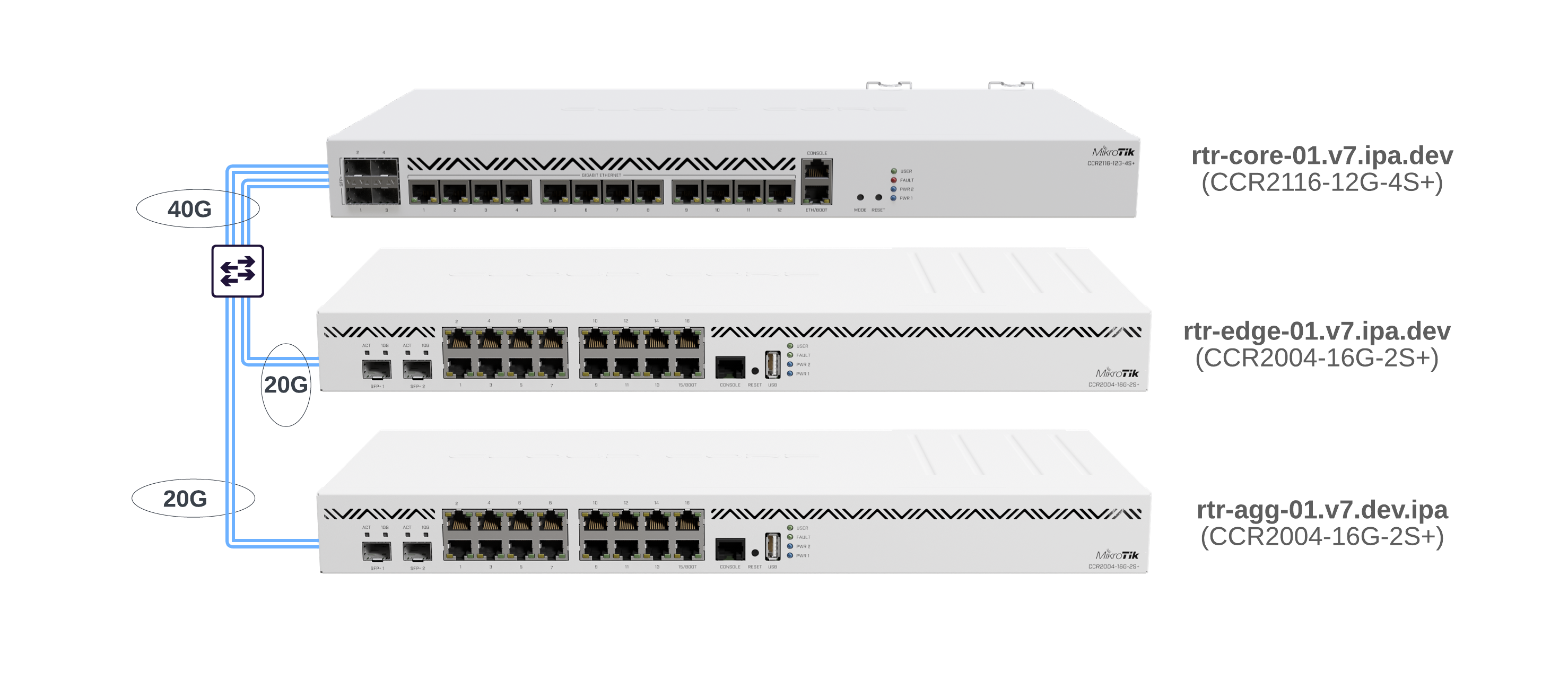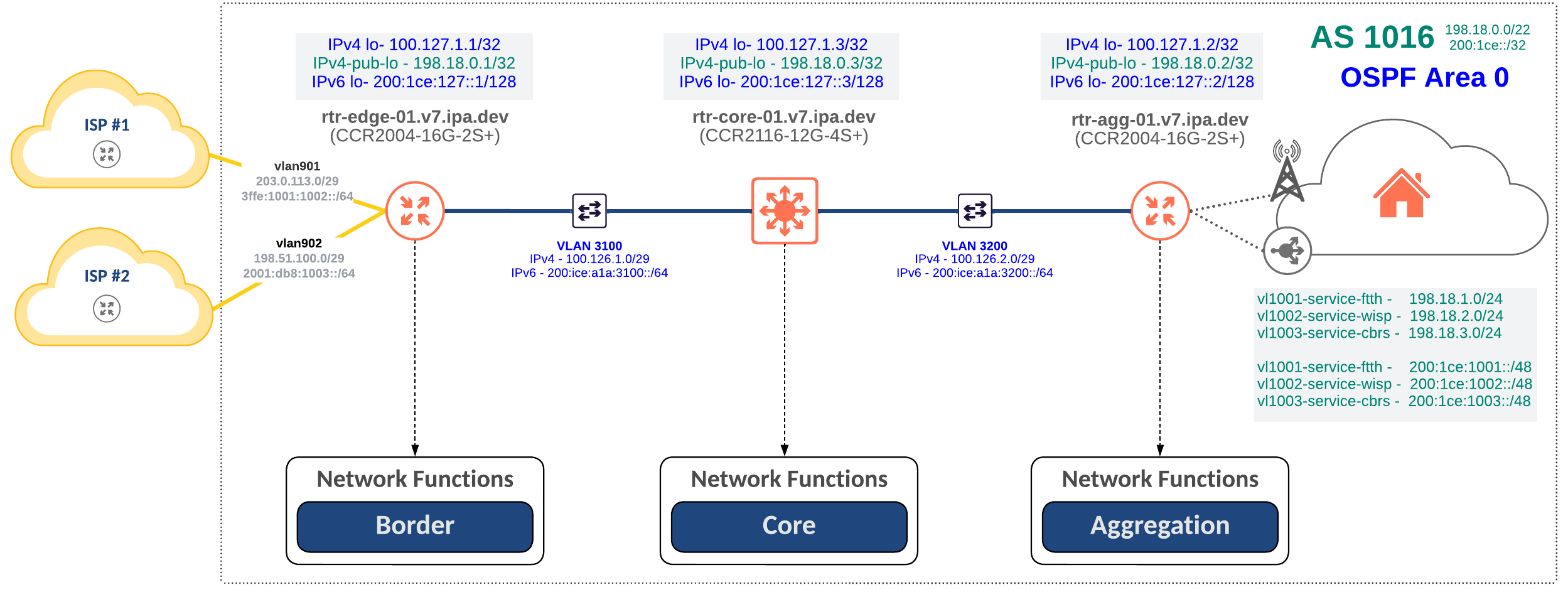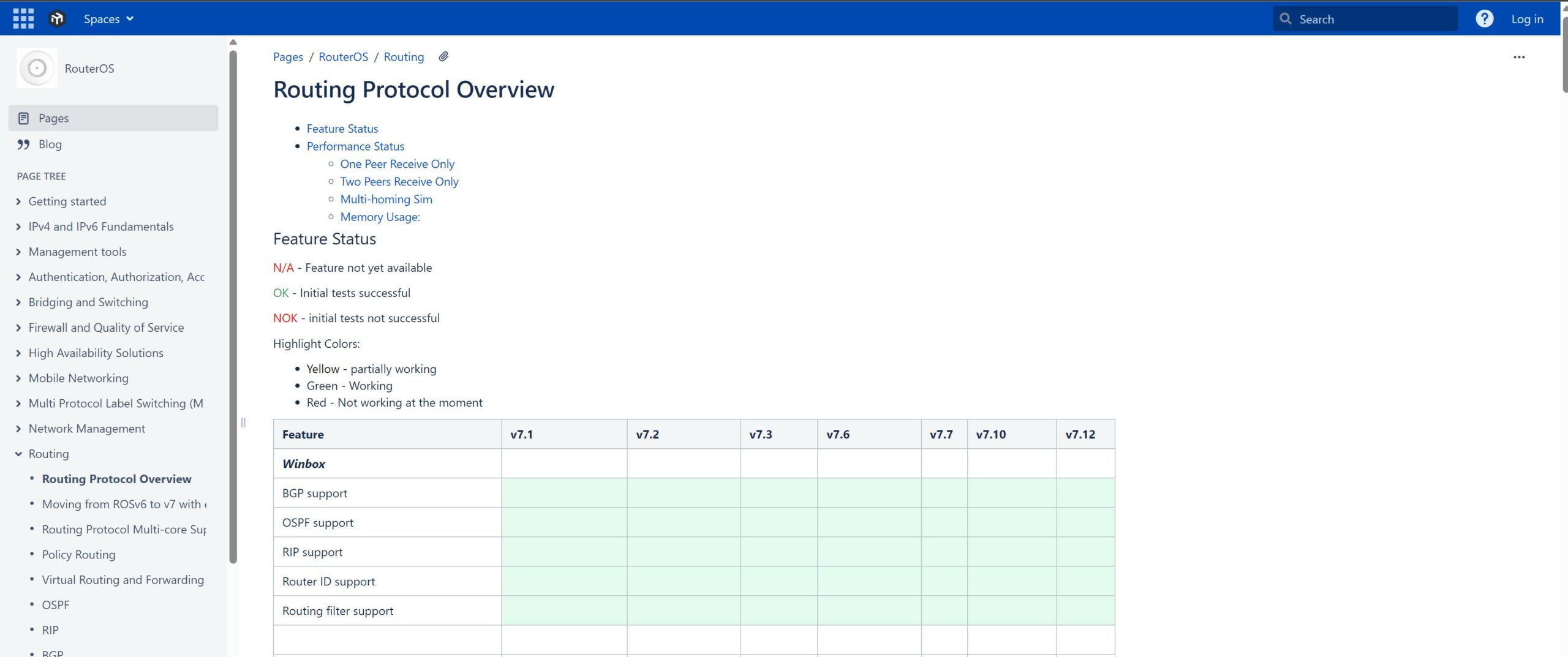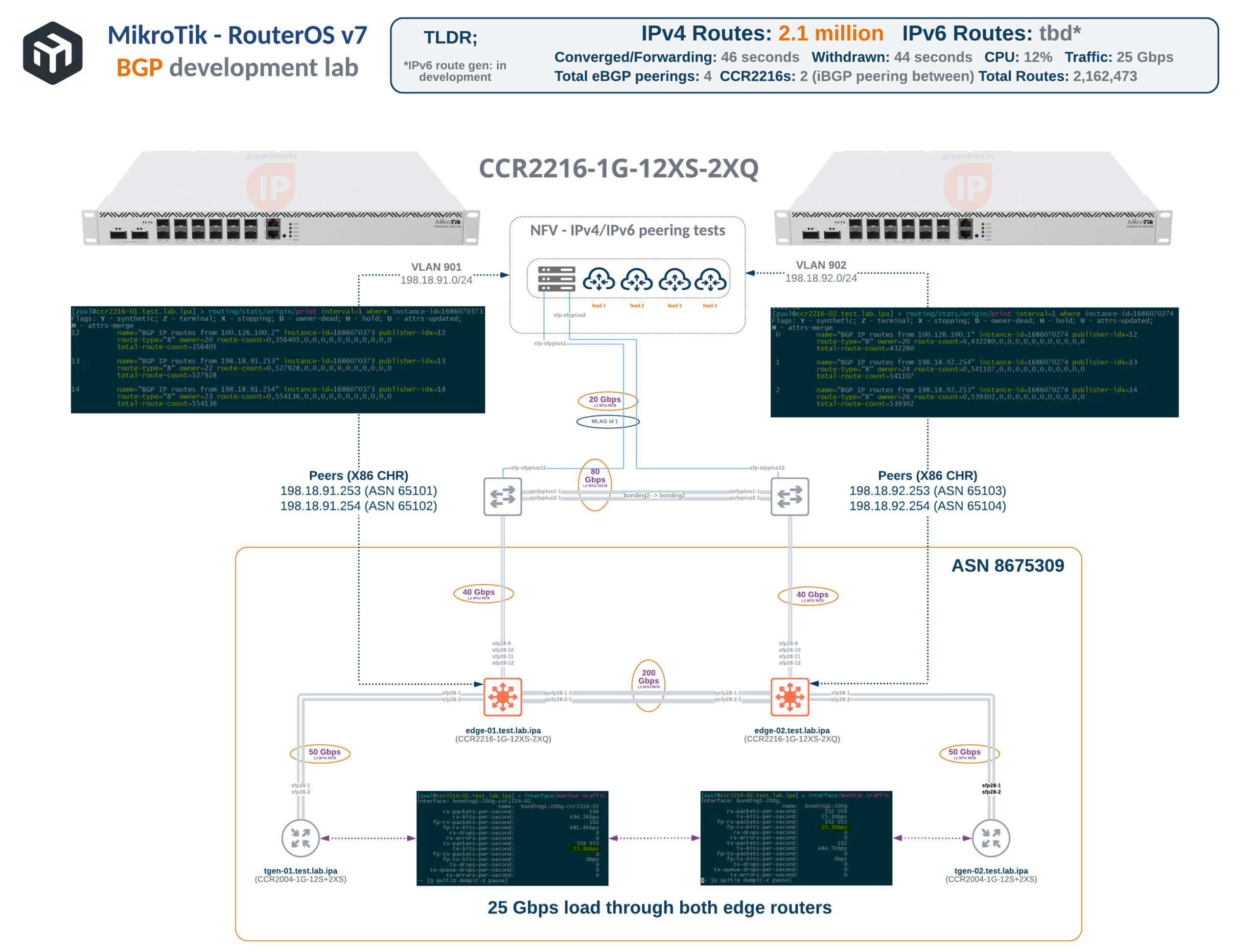
MikroTik RouterOS v7
Learn about MikroTik’s newest operating system and how IPA can help you migrate
A network operating system 10+ years in the making.
RouterOS v7 (ROSv7) has been in development since the early 2010s to replace RouterOS v6 and remove limitations of the older linux kernel it’s based on.
After years of development, version 7.1 was released in late 2021 and has been on a steady development cycle ever since.
MikroTik has made a significant effort to stabilize routing, switching and bridging as well as other important features like firewall, vpn and wireless.
Since the announcement of the CCR1K series being discontinued more and more networks are moving to version 7 and ROSv7 compatible hardware like RB5k, CCR2k and CRS5k series.
ROSv7 Planning
Let us help you evaluate the impact on your network of migrating to version 7 and create a migration plan.
ROSv7 Testing
ROSv7 Migration
ROSv7 Debug
IP ArchiTechs has more experience with RouterOS version 7 than any other consulting firm. IPA cultivates this expertise using development labs to test throughput, performance, stability and interoperability for RouterOS version 7.

Lab designs are dual stack to include both IPv4/IPv6 and are based on real world deployments for WISPs/FISPs

What’s new in the ROSv7 routing stack?

General Routing
OSPF
BGP
IS-IS
MPLS
Filters
Performance
Visibility
New common routing database in /routing/route
Enhanced monitoring for l3 hardware offload and ASIC usage
Read about version 7 and BGP on MikroTik’s new flagship CCR2216 router.
MikroTik – RouterOS v7 – BGP performance testing for full tables – StubArea51.net

What’s new in ROSv7 hardware?

CPUs
ASICs
Configuration
Expert configuration of network devices.
Validation
Migration
Troubleshooting
How your network will benefit from partnering with IP ArchiTechs

The IP ArchiTechs team can rapidly bring decades of experience to your business and quickly implement network changes in a safe way. Our ability to understand your business and technical requirements in a very short timeframe and execute on those goals is unparalleled. Our exposure to small entrepreneurial startups, large global businesses and everything in between makes us a perfect fit for your organization.
Improve your network with:
Access to network architects
Access to multi-vendor validated designs and architectures
Network documentation and discovery
Network troubleshooting and resolution
Implementation of new protocols and capabilities
Network outage resolution by expert network engineers and architects
Development of new designs and systems to solve complex problems
Enterprise Networking
Critical network infrastructure empowering your growth.
Datacenter & IX
Connect high throughput, high capacity transport around the world.
Satellite
Move packets around the world, even in the most remote areas. Overcome unique IP network challenges.
 +1 (855) 645-7684
+1 (855) 645-7684